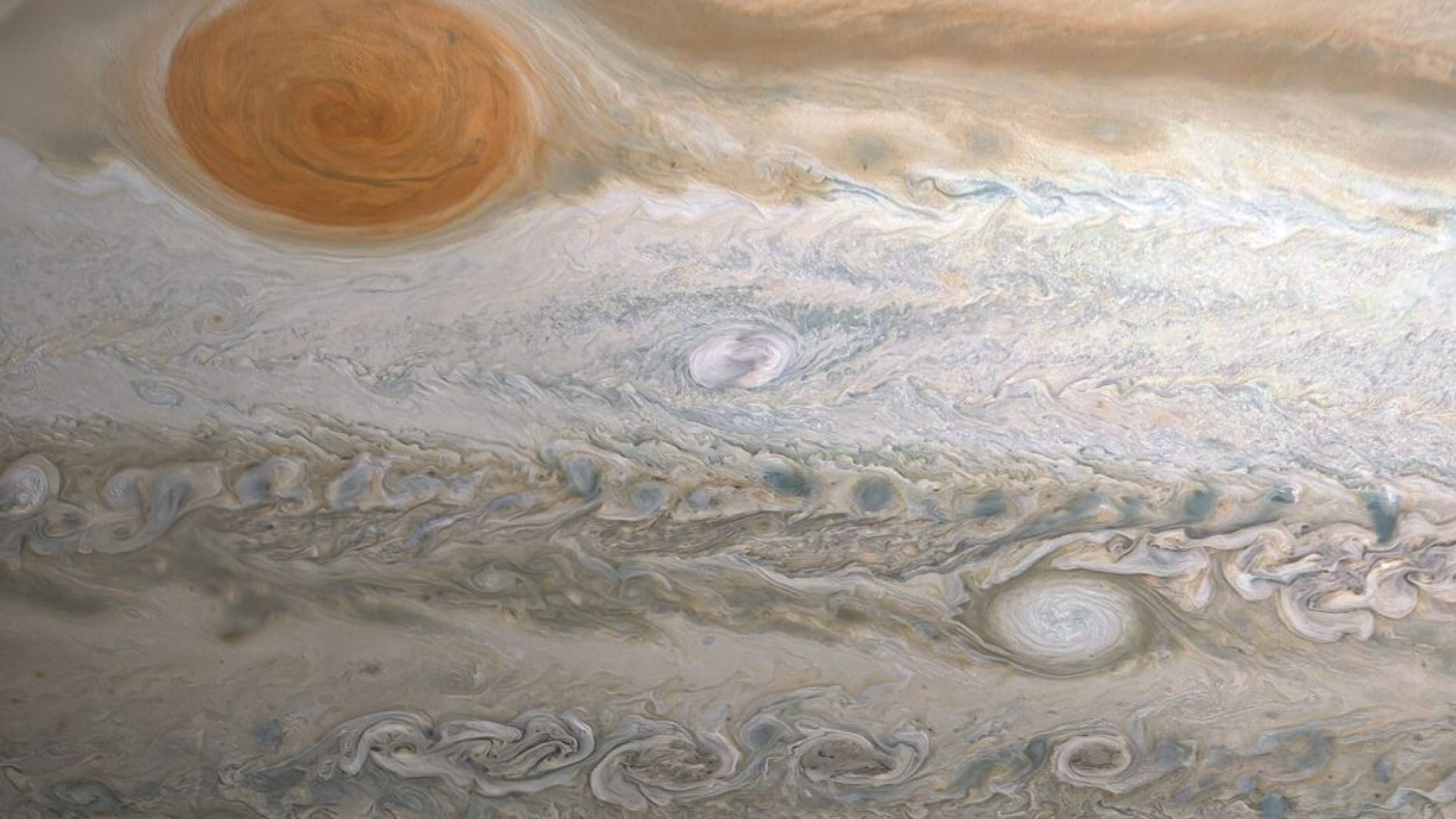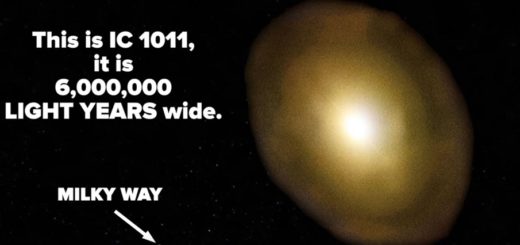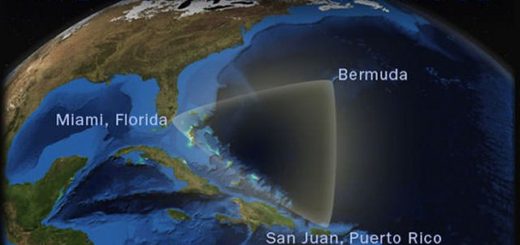New storm discovered on Jupiter, ‘Clyde’s Spot’

Jupiter has itself a new storm.
NASA’s June probe snapped pictures of a storm that recently popped up on the gas giant and was initially spotted by an amateur astronomer, Clyde Foster, known as “Clyde’s Spot.”
The feature is a plume of cloud material erupting above the upper cloud layers of the Jovian atmosphere,” NASA wrote in a post on its website. “These powerful convective ‘outbreaks’ occasionally erupt in this latitude band, known as the South Temperate Belt (JunoCam observed another outbreak at this latitude back on Feb. 7, 2018).”
OCEAN ON JUPITER’S MOON ‘COULD BE HABITABLE,’ RESEARCHERS SAY
The images of the storm were taken on June 2, NASA added, while the craft was flying between 28,000 and 59,000 miles above Jupiter’s clouds.
Although not quite as old as Jupiter’s Great Red Spot, given that it was first spotted on May 31 by Foster, it is near the giant storm, NASA added.
In contrast, Jupiter’s Great Red Spot has fascinated researchers for nearly 200 years, having been continuously observed since 1830.
In March 2019, NASA released an incredible image of Jupiter’s famous Great Red Spot and swirling storms in the planet’s southern hemisphere.
JUPITER’S MYSTERIOUS GREAT RED SPOT IS SHRINKING, BUT NOT HOW YOU’D EXPECT
NASA’s Juno probe has been orbiting the celestial giant since 2016 and passes over both of the planet’s polar regions every 53 days.
Jupiter continues to be a source of fascination for astronomers. In August 2019, a study suggested it may have had a massive collision with a “still-forming planet” approximately 4.5 billion years ago.
Two of Jupiter’s 79 known moons, Europa and Io, are also a source of intense interest for researchers. In August 2019, NASA said it would explore Europa, an icy celestial body that could be habitable for humans and support life, as soon as 2023.
In November 2019, an international research team detected water vapor above the surface of Jupiter’s moon Europa for the first time. It’s unclear what the oceans on Europa are made up of, but the Hubble Space Telescope detected the presence of sodium chloride on its surface, according to a study published in June 2019.
NASA MISSION TO EUROPA COULD ‘POSSIBLY SENSE LIFE’
The conditions on Europa have been previously likened to exoplanet Barnard B, a “super-Earth” 30 trillion miles from Earth.
It likely has a surface temperature of roughly 238 degrees below zero and may have oceans underneath its icy surface, according to a July 2018 statement from NASA.



 Creators of mankind
Creators of mankind Description of “Tall white aliens”
Description of “Tall white aliens” Where they came from?
Where they came from? About hostile civilizations
About hostile civilizations The war for the Earth
The war for the Earth “Tall white aliens” about eternal life
“Tall white aliens” about eternal life Video: “Nordic aliens”
Video: “Nordic aliens” Aliens
Aliens Alien encounters
Alien encounters The aliens base
The aliens base UFO
UFO Technology UFO
Technology UFO Underground civilization
Underground civilization Ancient alien artifacts
Ancient alien artifacts Military and UFO
Military and UFO Mysteries and hypotheses
Mysteries and hypotheses Scientific facts
Scientific facts


















